What is CC in Gmail?
CC (Carbon Copy) in Gmail allows you to send a single email to multiple recipients, while ensuring that all recipients can see each other’s email addresses. The primary use of the CC function is to keep people informed by including them in email conversations, even if they are not the main recipient.
For example, if you’re emailing a colleague about a project, you can CC your manager to keep them in the loop. CC is helpful when transparency is needed, as all CC recipients know who else received the message.
While CC keeps everything visible, Gmail also offers the BCC (Blind Carbon Copy) option if you need to keep recipients hidden, which we will explain later.
Gmail CCs—and by extension, BCCs—also have other uses aside from simply looping in a bunch of people to your emails. Used properly, you can keep copies of emails for your own reference or help keep individuals outside of the primary recipients informed with the latest updates in the email thread.
How Does Gmail CC Work?
In Gmail, the CC option is easy to use whenever you're composing an email. It allows you to send the same email to multiple recipients at once. Here's how you can CC someone in Gmail:
- On the right-most section of the To field, click on Cc, and a separate field should appear beneath it.
- Here, you can CC multiple recipients by typing out their email addresses—or selecting from the dropdown suggestions if they’re people that you’ve sent mail to before.
- To remove someone from your CC list, just click the X next to their address. This is useful if you added someone by mistake or realize the person doesn’t need to be included in the email conversation.
- Once you’ve entered all the intended recipients of your email, click Send. Now everyone on your CC list will receive a copy of your email that was sent to your primary recipients.
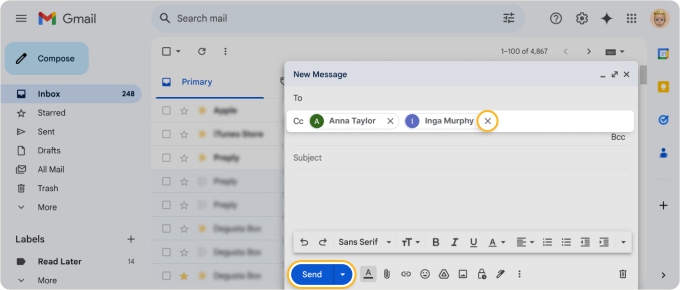

Practical use cases for CC
- Team Updates: If you're sending important information to a client and want to keep your manager informed without expecting a response, you can CC them.
- Project Coordination: CC is useful for keeping several team members in the loop on ongoing projects, allowing everyone to stay up-to-date without needing direct replies from everyone.
- Information Sharing: CC allows you to include secondary recipients who need to see the information but may not be directly involved, such as stakeholders.
BCC vs CC
You may have noticed that aside from the option to CC recipients, there’s also another option called Bcc right next to the CC button. BCC stands for Blind Carbon Copy, and it works similarly to CC where your email is sent to other people aside from your primary recipients.
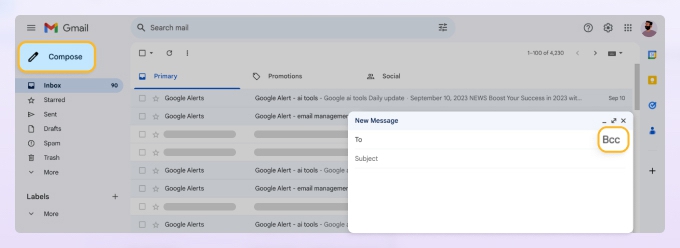
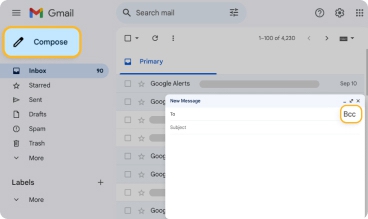
Unlike CC, the primary recipient won’t be able to see whoever is on your BCC list. This can be useful in situations where you need to keep a copy of your emails since you can BCC yourself in an email chain for future reference. This is also useful in situations where you have a large number of recipients, and you don’t expect a response.
Using BCC is also useful for privacy purposes. If you send an email to unrelated individuals, such as subscribers of a mailing list, you can use the BCC feature to keep the recipients’ email addresses hidden from each other.
To add a recipient to the BCC list, click on the Bcc button next to the Cc option along the To field. A new field will appear underneath where you can add BCC recipients similar to how you add CC recipients. It’s also possible to have a mix of CC and BCC recipients by clicking on their respective buttons.
How to CC in Gmail Depending on Your Device
Google generally keeps the same design of Gmail across platforms, so you can easily switch between devices and won’t have any trouble adding recipients to CC or BCC.
- For desktop: After clicking Compose on your Gmail client, simply click Cc at the end of the To field.
- For Android or iPhone: After clicking Compose in the Gmail app, click the down-pointed arrow at the end of the To field to access the Cc and Bcc fields.
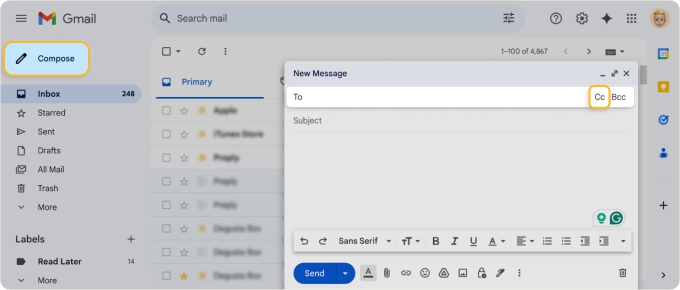


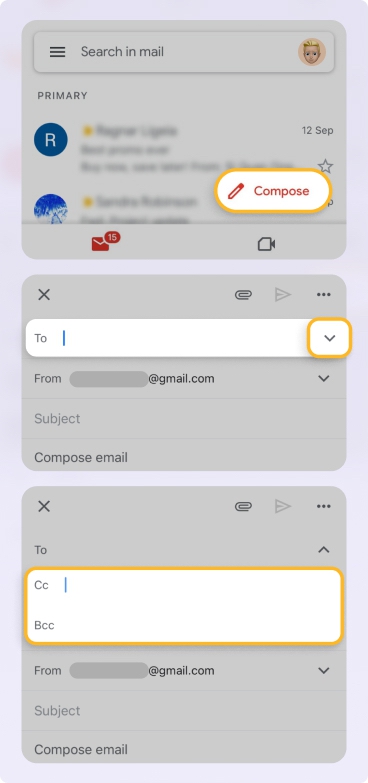
After these steps, just add or remove your recipients as you’d like, then hit Send for desktop, or the arrow (paper plane) icon for mobile, to send the email when you’re done.
How to Blind Copy Someone on Gmail?
To send an email with hidden recipients in Gmail, click Compose, then select Bcc (next to the Cc option) in the email composition window. Enter the email addresses of the people you want to blind copy in the Bcc field. This will hide the recipients' email addresses from each other when you send the email.
How to Find CC’d Emails in Your Inbox
When you carbon copy someone on an email, your outgoing messages will appear in the Sent folder along with other sent emails, even those that have no recipients in CC. Emails sent to multiple recipients will have the recipients listed with commas.
What happens if someone adds you to CC?
In Gmail, emails where you are CC’d will arrive in your inbox like any other message and won’t be placed in a separate folder. This can make it challenging to quickly locate these emails, especially in a crowded inbox.
This is where Clean Email can simplify things. As a powerful inbox management tool, Clean Email helps you efficiently locate and organize emails, including those where you’ve been CC’d.
By navigating to the You are CC-ed Smart Folder, you can easily filter and review all emails that have you in the CC field—whether it's a recent conference mailing list or an important message sent by your boss to multiple coworkers.
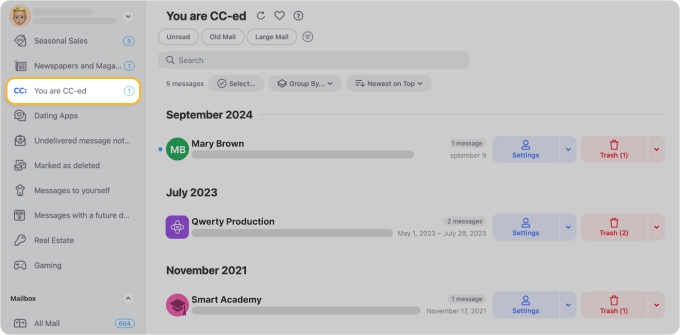
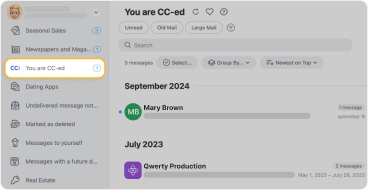
Automation and Settings for CC in Gmail
Gmail doesn’t offer a built-in feature to automatically CC or BCC someone on every email you send, but there are some workarounds and third-party tools to help you customize this function.
How to set default CC in Gmail
In Gmail, you can only add recipients to the CC or BCC fields manually for each message. However, some Chrome extensions and add-ons can enhance Gmail’s functionality by allowing you to set default CC or BCC fields automatically.
You can also connect your Gmail account to an email client like Outlook, Thunderbird, or Apple Mail. Unlike Gmail, these clients allow you to configure default CC/BCC settings for every email you send. These settings will apply to all emails sent from the client while still using your Gmail account.
How to automatically CC or BCC yourself in Gmail
There are times when you may want to keep track of all your outgoing emails by receiving a copy of them in your own inbox. This is where adding yourself to the CC or BCC list can be useful.
Unfortunately, Gmail doesn't offer a native solution to automatically CC or BCC yourself on every email. You can only manually add yourself to the copy list for each message. Alternatively, you can use external apps and extensions, as mentioned above, to manage automatic CC settings.
Even setting up a forwarding address won’t automatically CC someone, as forwarding only works for incoming mail, and Gmail filters generally apply to received emails, not outgoing ones.
Keep Your Email Organized With Clean Email
Emails can quickly become a pain to read through once you receive enough of them, especially if you’ve been CC’d on a lot of messages.
Clean Email can help you maintain a clutter-free inbox with a variety of features that can automatically manage your mail for you. The app enhances Gmail’s functionality and gives you several ways to clean and organize your email, right after you sign up or log in.
Cleaning Suggestions
Cleaning Suggestions provide smart recommendations for managing your emails efficiently. With just a few clicks, you can delete, block, or unsubscribe from groups of emails. These suggestions are based on factors like sender reputation, your past interactions, or actions frequently taken by other Clean Email users.
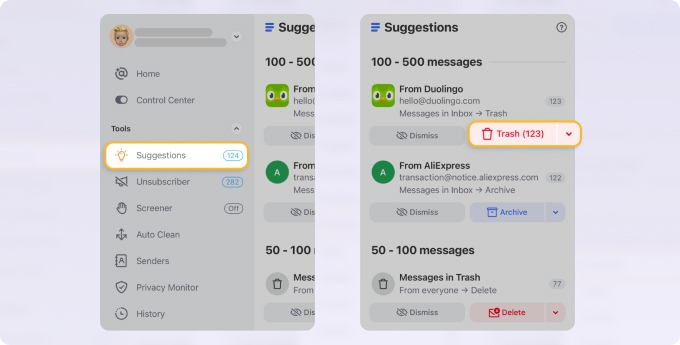
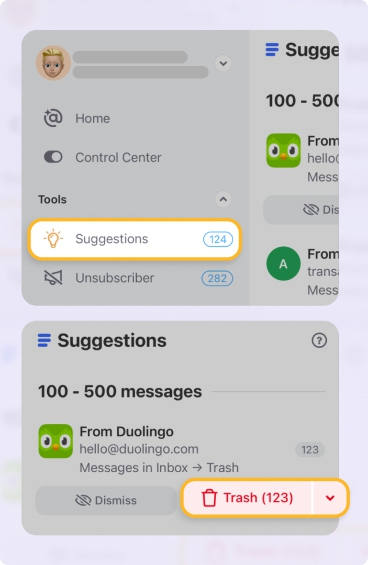
Smart Folders
One of the best ways to manage piles of emails in your inbox is by using the Smart Folders.
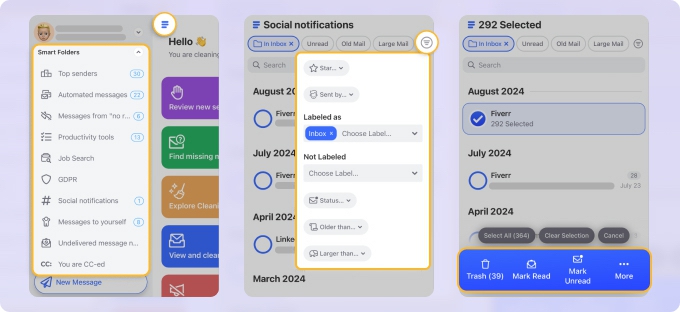

Smart Folders automatically organize your emails based on 30+ predefined filters, including You are CC-ed, Messages from “no reply,” Social notifications, Online shopping, or Finance and Insurance. These folders sort your emails by content and topic as they come into your inbox, allowing you to easy oversight into what kind of emails you’re getting.
Unsubscriber
A cluttered inbox filled with subscription emails can cause you to overlook important messages. Clean Email's Unsubscriber tool allows you to remove yourself from mailing lists quickly and in bulk, saving time by unsubscribing from multiple newsletters at once instead of clicking "Unsubscribe" individually for each message.
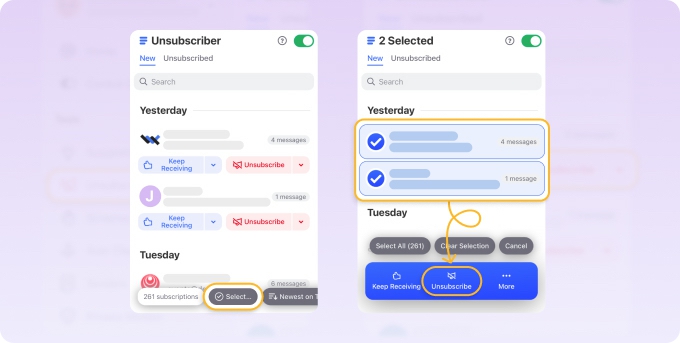
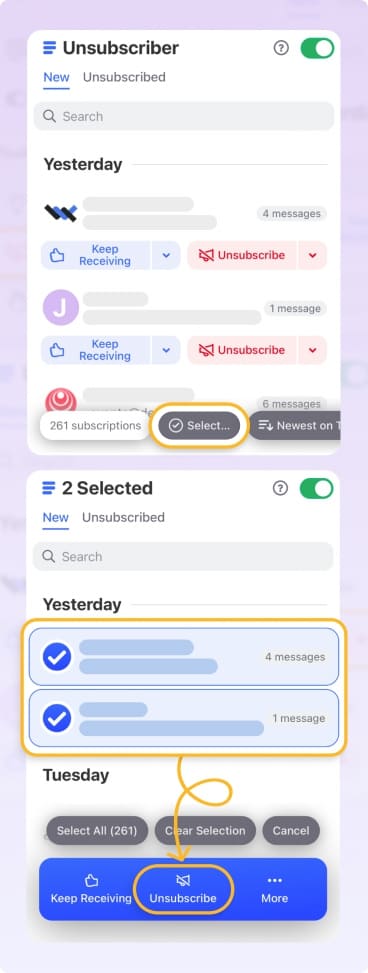
Reply, Forward, and Compose new emails
What if you discover a forgotten email that requires immediate attention while sorting through your inbox? No problem, you can quickly reply, forward, or compose new emails directly from Clean Email’s interface. You can also easily add recipients to CC or BCC, ensuring that everyone who needs to be informed stays in the loop—all without leaving the app.
Simply click the New Message button located in the navigation pane, and you’ll be brought to the email composition window. There, you can set your Cc and Bcc by clicking the Cc button located next to the Add recipients… field. This will extend the field, giving you two additional lines where you can put your CC and BCC recipients.
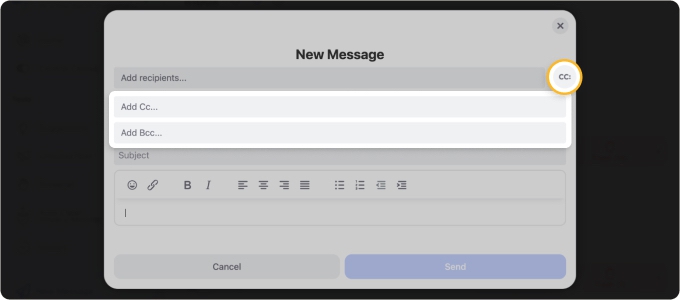
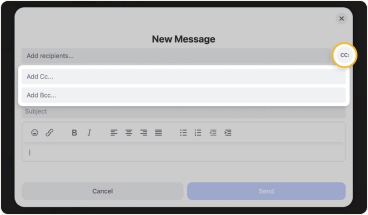
Clean Email makes managing and sending messages just as seamless on mobile as on desktop, helping you stay organized and responsive, wherever you are.
Auto Clean
With Auto Clean, you can create custom rules to automatically handle your incoming emails based on criteria like date, sender, or size. These rules allow you to automate inbox management, apply actions like cleaning up specific folders, or organize new and existing messages according to your preferences.
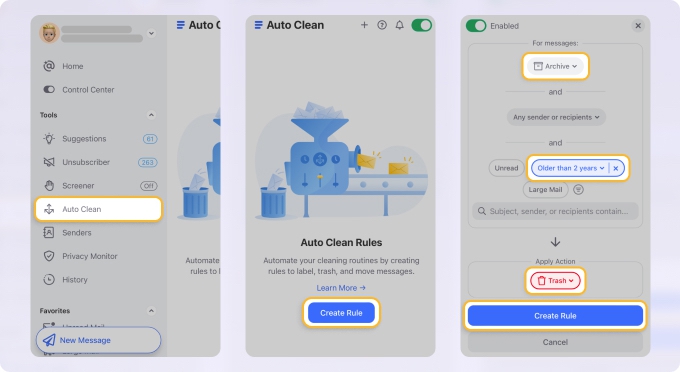

Wrap-Up
The CC option in Gmail is a great way to smooth over the process of sending emails. But with Clean Email, you'll have access to more powerful and efficient ways to keep track of and manage your emails effectively.


